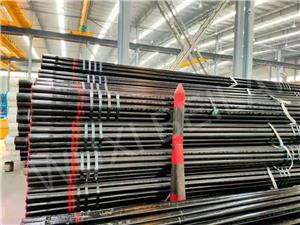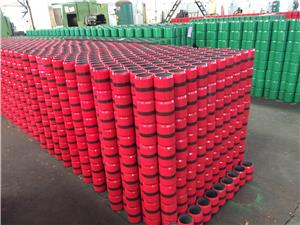Why should seamless steel pipes be pickled and passivated?
During the production and use of seamless steel pipes, a series of surface treatments are often required to ensure good corrosion resistance, extend service life and improve product quality. Among them, pickling passivation is an important surface treatment technology. So, what is the main purpose of pickling and passivating seamless steel pipes?
First of all, we need to understand the problems that may be encountered during the production and use of seamless steel pipes. During the production process of seamless steel pipes, some oxides, oil stains and other impurities often remain on the surface. These impurities not only affect the appearance quality of the steel pipe, but also adversely affect the corrosion resistance of the steel pipe. During use, steel pipes may also be corroded by the external environment, such as acid rain, corrosive gases, etc., which further accelerates the corrosion of steel pipes.
Therefore, in order to remove impurities on the surface of seamless steel pipes and improve their corrosion resistance, pickling and passivation treatment is required. The main purpose of pickling is to dissolve oxides, oil and other impurities through the chemical reaction between the acid solution and the impurities on the surface of the steel pipe, so that the surface of the steel pipe can restore its metallic luster. The purpose of passivation is to form a dense passivation film on the surface of the steel pipe to prevent further reaction between the external corrosive medium and the steel pipe matrix, thereby improving the corrosion resistance of the steel pipe.
Specifically, the pickling and passivation process of seamless steel pipes can be divided into the following steps:
1. Cleaning: First, the seamless steel pipe needs to be cleaned to remove oil stains and other impurities on the surface. This step can use mechanical cleaning or chemical cleaning.
2. Pickling: Put the cleaned seamless steel pipe into the pickling tank, and dissolve impurities such as oxides and oil stains through the chemical reaction between the acid liquid and the impurities on the surface of the steel pipe. During the pickling process, the concentration, temperature and treatment time of the acid solution need to be controlled to ensure that impurities can be effectively removed without causing damage to the steel pipe matrix.
3. Rinsing: After pickling, the seamless steel pipe needs to be rinsed with clean water to remove the acid and impurities remaining on the surface.
4. Passivation: Put the rinsed seamless steel pipe into the passivation tank, and form a dense passivation film through the chemical reaction between the passivation liquid and the surface of the steel pipe. During the passivation process, it is also necessary to control the concentration, temperature and treatment time of the passivation solution to ensure the quality and uniformity of the passivation film.
5. Rinse again: After passivation is completed, rinse the seamless steel pipe with clean water again to remove the passivation liquid remaining on the surface.
6. Drying: Finally, dry the rinsed seamless steel pipe to evaporate the water on its surface to avoid affecting subsequent processing and use.
Through the above steps, the surface of the seamless steel pipe has been effectively cleaned and treated, which not only removes impurities and oxides on the surface, but also forms a passivation film with excellent corrosion resistance. This enables the seamless steel pipe to better resist the erosion of external corrosive media during subsequent use, extend its service life, and improve product quality.




